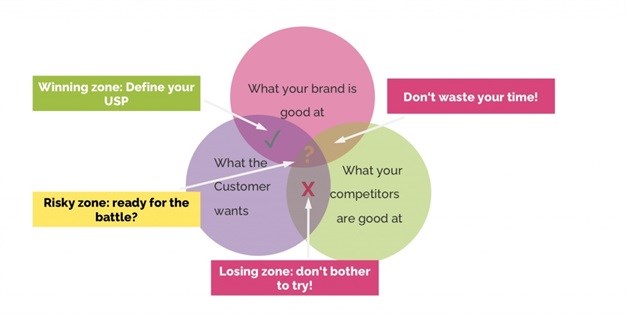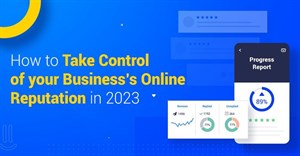Trending
Elections 2024
Jobs
- Sales Associate Hazyview
How to grow your startup one step at a time: Step 1

But why is it necessary? You just want to spend your time building the business, right? Conducting market research and doing a competitor analysis will give you a better understanding of your market, your customers and their needs as well as better insight into your competitors. Which in turn will help you better focus your marketing activities and help you to make informed decisions about the product or service you are developing.

Market research
Let’s look at market research first. Primary research is all data you get directly from an original source. You collect this information through surveys, interviews, focus groups etc. In the very early stages of a business, try to get out there and speak to as many people as possible.
Ask their opinion on your proposed product or service, whether it is something they will use, what they would be prepared to pay for it or, if they don’t see the need for the product or service, why not? And remember to not just question those who will reaffirm your own theories about your business! The added advantage of early communication with potential customers is that it can lead to brand ambassadors who talk about your business before you are even up and running.
When doing primary research, make sure you have a representative panel. To really get a full round idea of what your potential customers think and to convince potential investors that you have done proper research, you need a sample of at least 200 people. So start early and record all data so that you can refer to it when making important business and marketing decisions.
Secondary research is looking at available research that other organisations have compiled. By studying existing reports and whitepapers, you can get valuable insights on your market and your audience. ComScore, Nielsen, Think with Google and MillwardBrown are examples of research houses you can consider. Although some services are paid for, there is a wealth of free information available on the Internet through reports issued by researchers or white papers that can be downloaded.
Knowing how to do research is one thing, but you also need to know what to do with the research afterwards. The most important reason for a startup to do research is to enable you to answer three questions:
- Is there a customer need? Are you solving a customer problem and is it something they want or need?
- Is there a market in the market? Do you know the size of the addressable market? Is it enough to sustain and scale your business?
- Is there growth potential? Can you identify new markets to target? Is there an opportunity to expand your business offering going forward?
When the time comes to start looking for funding, which statement will investors react best to? “Our business will offer x service, because we all know that people want more time to relax” OR “78% of respondents want more time to relax, and our product will help them to do exactly this”. The latter statement gives you a voice of authority and indicates that you know exactly what your market wants and how you can fulfill that need.
Then there is also your most valued customer to consider. Through your research, you will see who your ideal customer is – the one that will spend the most money, who will use your product/service regularly and who will not just interact with you once and then disappear. The lifetime value of a customer is more important than just getting the ‘lowest hanging fruit’ who are easy to convert but then don’t stick around and bring repeat business.
Competitor analysis
The second part of your early marketing activities is the competitor analysis. Once you have a clearer understanding of your competitors, their strengths and weaknesses as well as market trends, you will be able to define your own unique value proposition. It also means that you won’t get caught off guard by a business that does exactly the same, maybe even better than you and at a better price. Also, keep in mind that you are never just competing with direct competitors – since you are competing for a share of your customers’ wallets, your competition can be businesses that you didn’t even consider as competitors before.
The first step in a competitor analysis is to identify the current and potential competition set. Firstly, look at the market from the customer’s viewpoint and group all your competitors by the degree to which they contend for the buyer’s share of wallet. Then group your competitors according to their various competitive strategies so you understand what motivates them. You also need to identify which assets and skills are important in your business and then list which of your competitors have the presence or absence of those assets and skills. If a competitor is very strong in those areas, think about which barriers you can build for them not to enter your market. Their weaknesses can be exploited in your product development.
Once you’ve established the key assets and skills necessary to succeed in your business and have defined your distinct competitive advantage, you need to communicate them in a strategic form that will attract market share as well as defend it. Competitive strategies usually fall into these five areas: Product, distribution, pricing, promotion and advertising. This is where you define the elements that will set your product or service apart from your competitors.
One way to gain valuable information about your competitors is to interact with them as if though you are a customer. Look at their social media accounts, look at how they handle customer complaints, sign up for their newsletters and read their blogs. Check Hellopeter for any complaints that have been lodged against them. You can also gain a lot from looking at their advertising campaigns (if they advertise). What is their key unique selling point (USP)? What is their tone of voice and who does it look like they are speaking to?
This diagram explains very clearly where your business should position itself. If you can get the winning zone right, your startup is bound to be a big success! And for this, you have to answer one (not so simple) question: “Customers will buy from me because my business is the only…” Write it down and revisit it regularly to be able to adapt to changing market conditions (customer needs) and competitor development (including new entrants).



















